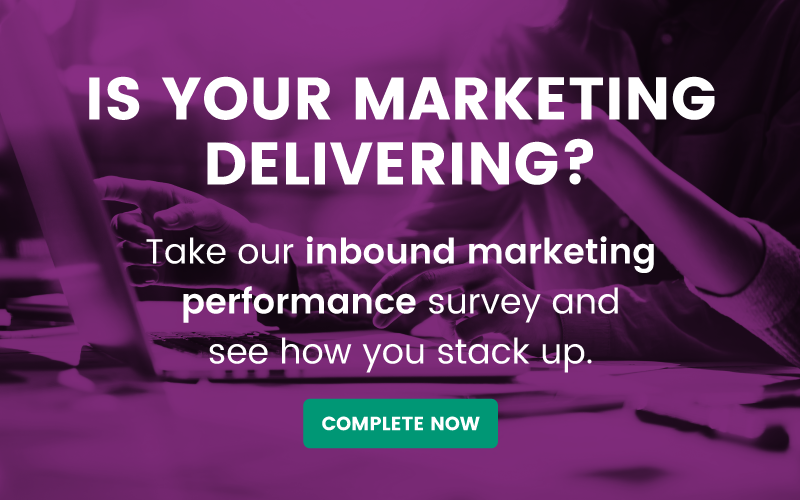Having a new website for your business is about so much more than getting a trendy looking design and some cool parallax effects. There are number of important considerations to make when it comes to making sure a website not only looks good but also delivers results.
Here are 5 things you should consider when investing in a new company website.
What do you want to achieve?
What is your old one not delivering that you want to improve on? What is the purpose of your website? Do you want brand recognition, lead gen, data capture, or doing some good old fashioned flogging of products? Thinking about the central goal of the website is key to success in a new website project.
Having a strong sense of purpose and a vision for what you want to achieve will help you avoid the kind of language agencies hate: “we just want to freshen it up a bit.” It helps both you and your prospective web design partner focus on how to attack the project. It determines whether you need a simple brochure website or a fully-fledged eCommerce shop. It determines the design, flow and structure of the website. Do not proceed until you have an answer to this question.
What is your current website doing well?
Don’t fix what ain’t broken. If there’s a feature from your current website which performs particularly well – a page, a button, a section – don’t scrap it just for the sake of it. Build on it and make sure it fits into your new eco system. That being said, you shouldn’t be scared to try new things – avoid making a tarted up replica of your current site. Return to point 1 (what do you actually want to achieve?) and explore new copy, call-to-actions and pages in order to achieve this goal.
What should the structure look like?
Many website projects fall victim to the idea that “more is more” – i.e. the more pages you have, it’ll look like you do more stuff, and you’ll get more business off the back of it. This isn’t necessarily the case, in fact for the majority of the time you’ll do better to strip back the number of pages and keep to ones you absolutely need. Ask yourself – do you really need to describe each service you offer in granular detail? Is this going to provide value to the customer? The structure of your website should flow – you want your visitors to move smoothly through a journey to some desired action. Keep this front of mind and focus on key products and services when decided on which pages to include and if you can combine multiple pages into one.
Does your current website rank well?
Sorry, but I’m going to have to get a bit technical for a second.
This is a key consideration when it comes to launching a new website and is easily missed if you’re too focused on the bells and whistles. How does the current iteration of your website perform on search engines for core key phrases? The last thing you want to do is launch a brand spanking new website with new page names and URL structures. and lose your first page ranking for an important keyword for your business. Google is a funny old thing, and if you don’t help it out by redirecting old pages to their equivalent new ones effectively it won’t help you out. From a technical perspective, this means creating a document which maps old pages to new ones, which can then be actioned by putting these redirects in place. If you can keep the same page names and URL structures, then happy days, but this isn’t always possible.
For example, you might be a company that sells artisan coffee, and your “Special Roasted Peruvian Dark Roast” ranks well for “Dark Roast coffee”. You’re expanding your range and on your new website, you’re launching a new section where you can group all of your dark roasts together, so the “Peruvian Dark Roast” page will sit on a different URL. You want to make sure that Google knows that you have created a new version and that the old version is obsolete.
| Old page | New page | Action |
| www.hipstercoffeeshop.co.uk/peruvian-dark-roast | www.hipstercoffeeshop.co.uk/dark-roast/peruvian | Redirect |
Little bit too technical? Not to worry. This is known as “site migration” – and an agency with an SEO specialist can help you with this sort of thing. I’ll let you know if I think of any (ahem).
Whose job is it anyway?
In this world of content-led marketing and inbound, many companies will be adding or improving on a particular element when launching a new website: the blog. Alas, so many times I’ve seen a company add a blog “because it’s good to have one”. They’ll post a short paragraph on the day of launch proclaiming “welcome to our new website!” and then it subsequently dies a death and is never updated again unless the business wins some sort of award. And then inevitably the person who had the password to the website leaves and doesn’t put it in their handover. In small business in particular, making someone responsible for maintaining the website both from a static copy perspective (i.e. the general pages of the site) and from a blog perspective is key. Whether that’s an in-house person, a freelancer or an agency, you need a content plan, or you website is in danger of becoming a dusty shop window which people suspect belongs to a company that’s gone out of business.
The fact of the matter is, many companies go into a new website project for all the wrong reasons. It should be about a business objective, not just aesthetics. There’s nothing worse than spending thousands of pounds on a new website that doesn’t help you see an uplift in leads, sign ups or enquiries. Focusing on the goals – the what and not the how – will help you to get an end product that delivers results. And if you can look bloody good while doing it, then that’s a bonus.

